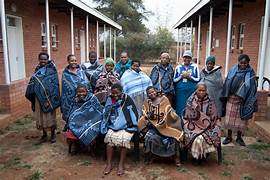Milestone for Maternal Health: Lesotho Achieves Record Surge in Health Facility Births
27 November 2023 by Pascalinah Kabi
In a groundbreaking shift for maternal healthcare in Lesotho, recent statistics reveal a notable triumph — health facilities now overwhelmingly host the majority of births in the country.
Representing a significant stride towards safer childbirth, an impressive 91.8 percent of live births now occur within the secure confines of health facilities.
According to the latest Bureau of Statistics Report on Vital Statistics (Births and Deaths), the place of delivery often determines the quality of care received by a mother and infant.
A 2021 Vital Statistics Report emphasises that “children delivered at a health facility are likely to experience lower mortality than those delivered at home because such facilities usually provide a sanitary environment and medically correct birth assistance.”
The report highlights that at least 92 percent of all recorded births took place in health facilities.
“There were more live births that occurred in health facilities with 91.8 percent, while the least proportions of births occurred at home with 8.2 percent,” the report states.
Breaking it down by gender, “there were more male live births, accounting for 92 percent, than home deliveries represented by 8 percent. The pattern holds for female children, with health facilities hosting 91.7 percent of births compared to 8.3 percent for home deliveries,” as per the report.
Recording 92 percent of live births in a safer, cleaner environment marks a positive turning point for maternal well-being, signifying progress towards Lesotho’s attainment of the United Nations’ Sustainable Development Goal 3. This goal aims to reduce the global maternal mortality ratio to less than 70 per 100,000 live births.
These positive shifts, according to a 2022 Country Annual Report by the United Nations International Children’s Emergency Fund (UNICEF), encompass various aspects such as antenatal care (ANC) attendance, a tradition deeply ingrained in Lesotho, where an estimated 77 percent of pregnant women have four ANC visits.
The report emphasises, “Proper care during pregnancy is crucial for the mother’s health status and the unborn baby’s development to reduce stillbirth and neonatal deaths, which remain high in Lesotho, estimated at 44 per 1000 live births.”
Male births higher
Meanwhile, the Bureau of Statistics report introduces the sex ratio of birth registrations. This ratio, averaging around 105, shows that, on average, there are 105 boys born for every 100 girls.
“The general sex ratio indicates that there were 105 male registrations per 100 female registrations, supporting the biological fact that there are more male than female births,” states the report.
It adds, “Sex ratio was above 100 in all districts, except in Qacha’s Nek and the Republic of South Africa (RSA), where ratios were less than 100.
“The district of Thaba-Tseka had the highest sex ratio at birth registration, with 111 male birth registrations per 100 female birth registrations, while the least sex ratio at registration was observed in Qacha’s Nek with 97 male birth registrations per 100 female birth registrations.”
This sex ratio is crucial as it helps the country understands the balance between males and females in the population. It also influences certain key indicators, such as the pace of population growth over time. If there are more boys born compared to girls, it can affect how long it takes for a population to double in size.
It is also noteworthy that in 2021, there were 30,493 recorded live births, 17,482 deaths, and 298 of these were infant deaths.
Statistical challenges
Both UNICEF and the Bureau of Statistics acknowledge the challenges in obtaining and verifying data to analyse healthcare trends in Lesotho.
“The lack of updated data on maternal and child health outcomes remains challenging,” reads UNICEF’s Country Annual Report 2022.
It adds, “The current country program has relied on health surveys from 2014 and 2018 and unreliable administrative data to monitor progress.”
The Bureau of Statistics notes that reporting data from informants poses challenges because some information is not correctly reported. It further indicates that some informants might misreport data and that those entering data might also forget or leave some records unfilled.
“As a result, the production of statistics is not easy due to some data gaps encountered while cleaning data for analysis; other variables are not filled. Lack of human resources for (NICR) National Identity and Civil Registration and BOS (Bureau of Statistics) personnel also poses a challenge where the available staff need to be capacitated and also recruit for the incoming staff,” the Bureau of Statistics said.
It also notes that the main challenge was due to the comparison of data with previous years because different systems were used for data collection and data entry.
Also, BOS notes that writing this report as recommended was compromised because some variables or data that is required are not available. It is against these challenges that BOS recommends that there must be a collaboration between it and the NICR. The collaboration will ensure that “Data used for the production of vital statistics report must be from civil registration.”
Lesotho’s remarkable strides in maternal healthcare, as illuminated by the latest statistics, signify a transformative journey towards safer childbirth and improved well-being for mothers and infants.
However, amidst these achievements, challenges persist in data collection and analysis, as highlighted by both UNICEF and the Bureau of Statistics. In navigating these complexities, Lesotho stands at a critical juncture, poised to build on its successes and overcome challenges for the betterment of maternal and child health.



1 Comment
Thank you for your sharing. I am worried that I lack creative ideas. It is your article that makes me full of hope. Thank you. But, I have a question, can you help me?